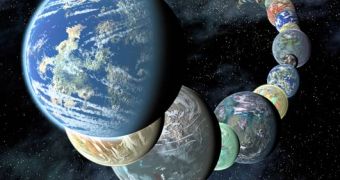A new Habitable Exoplanets Catalog listing all the planets susceptible of allowing life development on their surface has been issued.
The catalog, only one year ago counting 2 possible habitable planets, has now increased their number to 7: a totally unexpected achievement, scientists say.
See the full list and description of the seven exoplanets most likely to host alien life here.
“There are many press releases announcing discoveries of habitable planets ... and that is confusing,” explained lead researcher Abel Mendez, director of the University of Puerto Rico at the Planetary Habitability Laboratory of Arecibo, as cited by Space.
“So having a catalog that everyone can check what is available right now is useful.”
However, scientists admit that not all of the possibly habitable planets have been confirmed and that there are still many things to be understood about their environment, since most of the information currently detained refers to the planets' physical aspect only.
Although the catalog was initially intended as a helpful tool for scientists and researchers, the specialists involved in the project were surprised to receive a very favorable reaction from the large public as well.
“It was more than I expected,” Mendez said.
New exoplanets are being found almost every month by the High Accuracy Radial Velocity Planet Searcher (HARSP) in Chile and the orbiting Kepler Space Telescope.
The chances of potential life on a planet are determined by analyzing three fundamental conditions: the mass of the planet, its size and the amount of energy it receives from its mother-star.
It has been proven that small planets orbiting stable stars offer higher chances of life development than the big ones.
Mendez and his team have announced more research for the catalog is to be undertaken. They expect more planets to join the list in the coming years, as increasingly complex space studies are being led.
“A true Earth analog or a potentially habitable exomoon would be big discoveries. Certainly, this was the right time to start mapping the habitable universe around us,” Mendez said.

 14 DAY TRIAL //
14 DAY TRIAL //